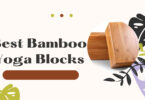Yoga props are evolving alongside yoga. In the west, we were first introduced to blocks and straps which are still popular today. However, yoga props have come a long way in their design or biodegradable materials in the recent years.
One such popular yoga prop is the Three Minute Egg. Yes, the name is derived from the amount of time it takes to cook a real egg, but these are not edible. Read this article to learn more about the weird-sounding Three Minute Egg yoga prop and how to use it in your practice.
The Three Minute Egg
The Three Minute Egg is a small, egg-shaped yoga prop that is used to support the body in various poses. They are made of foam and come in different sizes. However, unlike the regular yoga block, these come in beautiful colors that can even match your mood or decor. These are flexible and support you according to your position.
Types of Three Minute Eggs
Knowing which type of the Three Minute Egg will suit your needs is essential. Here are its types to help you make the decision:
Based on the Density
Soft: This type of density is ideal for the restorative/therapeutic yoga practitioners.
Medium: If you are a beginner in using props, this is the best type. It is highly versatile and can be utilized for both restorative and dynamic yoga practices.
Hard-boiled egg: This is perfect for our advanced yogis looking to practice their weight-bearing poses. More so, if your weight is above 150 pounds.
Based on Size
Namasteggs: These are the original Three Minute Eggs. They come in all the three types of densities and different colors.
Junior Eggs: These are the smaller version of the Namasteggs and are ideal for people with small hands. Also, those who practice yoga poses that require a lot of grips such as inversions, can use these eggs.
Benefits of Using Them
The Three Minute Egg offers many benefits, some of which are the following:
1. They help to improve your posture.
By providing support to the spine, the Three Minute Egg helps to improve your posture.
2. They help to relieve back pain.
The eggs help to take the pressure off the spine and the back muscles, which helps to relieve the back pain.
3. They help to deepen your stretches.
The eggs can provide resistance in yoga poses, which can help deepen your stretches.
4. They are versatile.
The eggs can be used in various yoga poses and are also suitable for different yoga practices such as restorative, Iyengar, or dynamic yoga.
5. Eggs on their round side help protect your wrists.
The bottom of the Three Minute Egg is well padded and adequately nests into the heel-palm area of your hands, giving good support. You can put pressure on your hands without worrying about the egg slipping.
6. It helps you align your body.
An egg can be used to check whether your feet are parallel, whereas when kept between your shins, it may assist you in detecting posture problems.
An egg between your thighs may assist you in learning the elusive but crucial skills of moving your inner and outer thighs back into place. Also, the natural curvature of your neck is supported by an egg that is placed beneath your head.
7. The best meditation cushion.
One of the most comfortable meditation cushions you’ll find anywhere is made from two yoga eggs stacked in an open V-Shape on the floor.
How to Use Them
Here are some tips on how to use the Three Minute Egg:
1. Place the eggs under your hips, lower back, or head for support in the yoga poses.
2. Keep the Three Minute Eggs under your palms for a deeper stretch in poses like the downward dog.
3. Use the eggs to provide resistance in yoga poses like warrior II or triangle.
4. Place the eggs under your forearms in a plank pose to take the pressure off your wrists.
5. Use the eggs to help align your posture in standing poses like the mountain pose or warrior I.
6. Keep them under your palms and knees in a simple tabletop position to cushion your joints as you put pressure on all four.
7. Place an egg between your thighs in poses like Cobbler’s Pose or Hero’s Pose to help deepen your stretch.
8. Support your inversions by placing an egg under your sacrum in poses like shoulder stand or Salamba Sarvangasana. Or you can put it under your shoulder blades in poses like Sirsasana.
Ways to Clean the Three Minute Egg
Like any other yoga prop, keeping your Three Minute Eggs clean after a sweaty yoga session is necessary. Here are some tips on how to clean your eggs:
- Add a tiny quantity of liquid dish soap to the water.
- Wipe your eggs with a sponge or towel, then use a soapy water to clean them.
- Make sure that you rinse it very well. Eggs do not absorb moisture, but the soap residue can make them slippery.
- Set them upright to dry. Your Three Minute Eggs will dry very quickly.
Pro tip: Simple is the way to go. Forget about employing cleaning agents that include petroleum-based solvents such as acetone and lacquer thinner. However, if you are a clean freak, you can use a tiny amount of disinfectant wipes/solvents.
When to Clean It
This depends on the type of yoga class that you attend. If you go to an intense yoga class, you must wash your prop after each use. However, if you attend a slow-flow class, you can get away with cleaning your props once a week.
Conclusion
Three Minute Eggs are a great invention in the world of yoga. Its design and material ensure its durability while also providing the user with a prop that is both comfortable and supportive. Not to mention the fact that it is also eco-friendly! If you are looking for a yoga prop that will last you a long time, buy a combination of 2 hard-boiled eggs or 4 Namateggs, as this will cover all your posture requirements.







